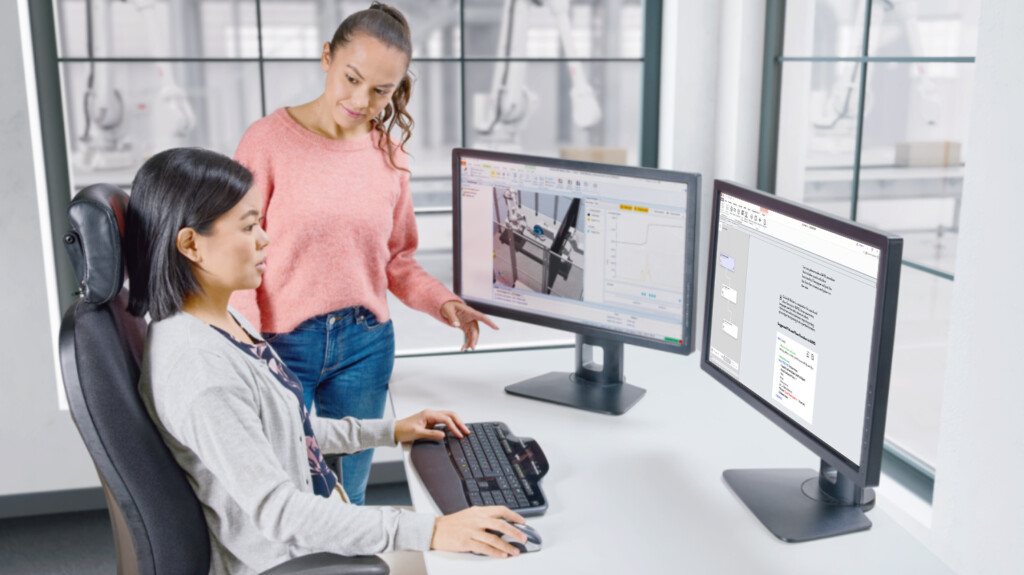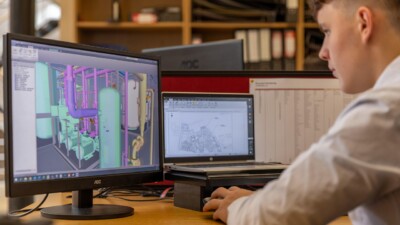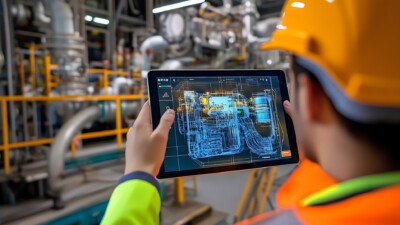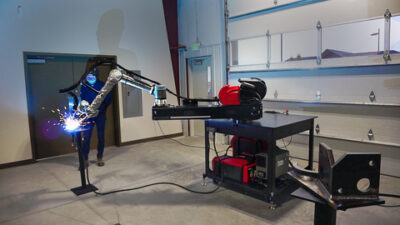Trained on ABBs technical documentation and with access to its library of manuals, the aim is to augment novice programmers’ skills.

ABB Robotics has added AI capability to its Robotstudio Suite, an offline programming and simulation tool for robotic applications.
The product was launched at the China International Industry Fair in Shanghai.
The new Robotstudio AI Assistant uses generative Al to make robot programming faster, easier, and more accessible. ABB Robotics president Marc Segura says this is the company’s latest effort to commercialize AI by enhancing robot versatility and encouraging their use beyond traditional manufacturing.
“The demand for AI in robotics is driven by the need for greater flexibility; faster commissioning cycles and a shortage of the specialist skills traditionally needed to program and operate robots. By adding this generative AI Assistant, we are expanding its benefits to reach less experienced users and help experts solve technical challenges faster,” Segura says.
Featuring a Large Language Model (LLM) that understands and interprets human language, Robotstudio AI Assistant draws from ABB’s library of manuals and documentation to deliver accurate responses to questions, enabling users to set up faster and quickly find answers to technical challenges.
Robotstudio is more than a straightforward LLM, however. Magnus Seger, Global Product Manager, Simulation Software, ABB Robotics, says it also has “agentic” qualities because it and autonomously selects from and uses multiple tools, depending on the user’s request.
The AI assistant scans and queries ABB manuals using a retrieval augmented generation (RAG) system. It also reads robot code from the user’s active RobotStudio project to ground answers in the user’s own code, making it more applicable to their specific enquiry and task.
Seger says that beyond the select product manuals and the user’s local project, no external data is accessed.
“The model itself is trained using selected manuals (RobotStudio, RobotWare, RAPID) that are made available via a RAG system. ABB’s documents include current, leading-edge information that best fits challenges relating to ABB Robots,” says Seger. “ABB’s document library is updated regularly, and new documents are created alongside each new robotics launch, which is why using this model gives users information that is up-to-the-minute and retrieves the latest technology documentation at runtime.”
Queries are handled through the Azure-hosted RAG system and data is transmitted to the Azure cloud using encryption. Customer-provided data is only used for the active request and never for training.
“The safety of our customers’ data is very important to us; our protocols for storing data are reviewed and updated regularly, in line with current best practice and the ABB library is not locally stored each time there is an interaction with RobotStudio,” Seger says.
It’s important to note this is truly an assistant. ABB’s AI assistant will not program a robot autonomously with no user interaction, and users can’t train the AI to do so.
“Both RobotStudio and RobotStudio AI Assistant currently require user involvement, and any code suggestions must be reviewed and approved by the user before being applied to a robot controller, cautions Seger. “However, RobotStudio AI Assistant is part of ABB Robotics Autonomous Versatile Robotics (AVR) portfolio, as it supports ABB robots and software to move closer to versatility and intelligence by enabling them to develop skills that include planning, adapting, and executing diverse tasks, independently, in real time, and without human intervention.”



